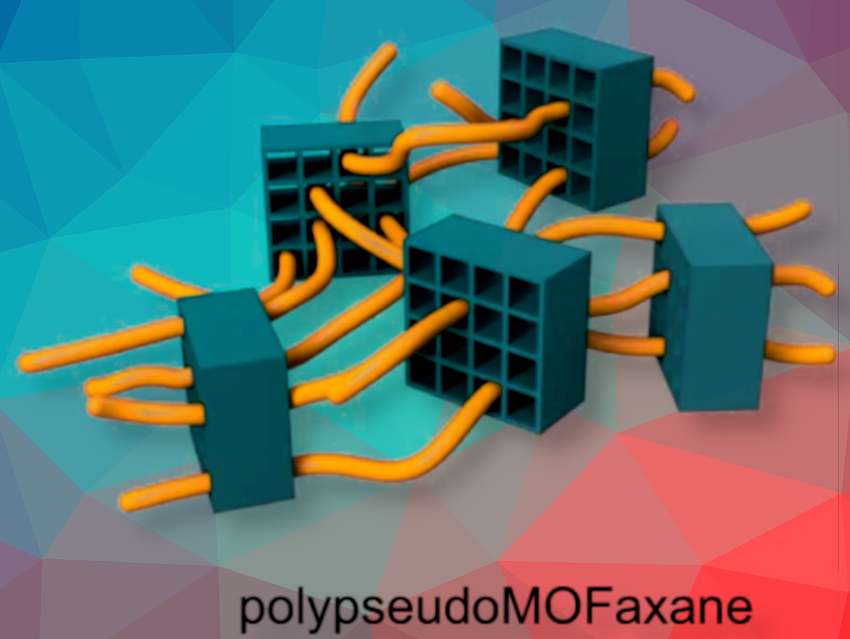Rotaxanes are interlocked molecules consisting of a macrocyclic ring resembling a rotor and a threaded backbone similar to an axle, with bulky end caps. Scientists have successfully synthesized various rotaxane structures incorporating both organic and inorganic components since their proposal in 1961. Mechanically interlocked architecture has inspired the fabrication of numerous molecular systems, such as rotaxanes, catenanes, molecular knots, and their polymeric analogues. However, there is still limited exploration of designing topologically interlocked materials on a larger scale.
Metal-organic frameworks (MOFs) are crystalline materials with nanometer-sized pores formed by coordinating organic ligands to metal ions. Since their discovery in the 1990s, MOFs have been extensively studied for various applications such as separation, storage, catalysis, and transportation.
Nobuhiko Hosono and Takashi Uemura, The University of Tokyo, Japan, and colleagues have synthesed a polypseudoMOFaxane thereby proposing MOFaxane as a new class of interlocked system using MOFs as rotors on polymer chain axles. In analogy with rotaxanes, the team defined pseudoMOFaxane, polyMOFaxane, and polypseudoMOFaxane, as subclasses.

Source: © Tomoya Iizuka, et al. Nature Communications 2023
The researchers successfully created the first example of a MOFaxane, which has a structure where multiple polymer chains thread through a single MOF microcrystal, forming a topological network in the bulk state. This topological crosslinking architecture was achieved by simply mixing MOF microcrystals with extremely long polymer chains. The team used a nanoporous pillared-layer-type MOF microcrystal, [Cu2(bdc)2(bpy)]n (bdc = 1,4-benzenedicarboxylate, bpy = 4,4′-bipyridyl), as the host for an ultralong polyethylene oxide (PEO) guest.
By tuning the size and structure of the pores that govern the interactions between the polymer chains and MOFs, and by improving the penetration method, it should be possible to create a diverse range of MOFaxane architectures with unique properties. One notable characteristic of the topological crosslinking architecture is its ability to suppress unthreading reactions, which distinguishes it from conventional polyrotaxane materials.
The researchers believe that MOFaxanes have the potential to promote the design of organic-inorganic hybrid materials, enabling their extension from the nano- to the macroscopic scale based on previously established concepts.
- An approach to MOFaxanes by threading ultralong polymers through metal–organic framework microcrystals,
Tomoya Iizuka, Hiroyuki Sano, Benjamin Le Ouay, Nobuhiko Hosono, Takashi Uemura,
Nature Communications 2023, 14, 3241.
https://doi.org/10.1038/s41467-023-38835-5



